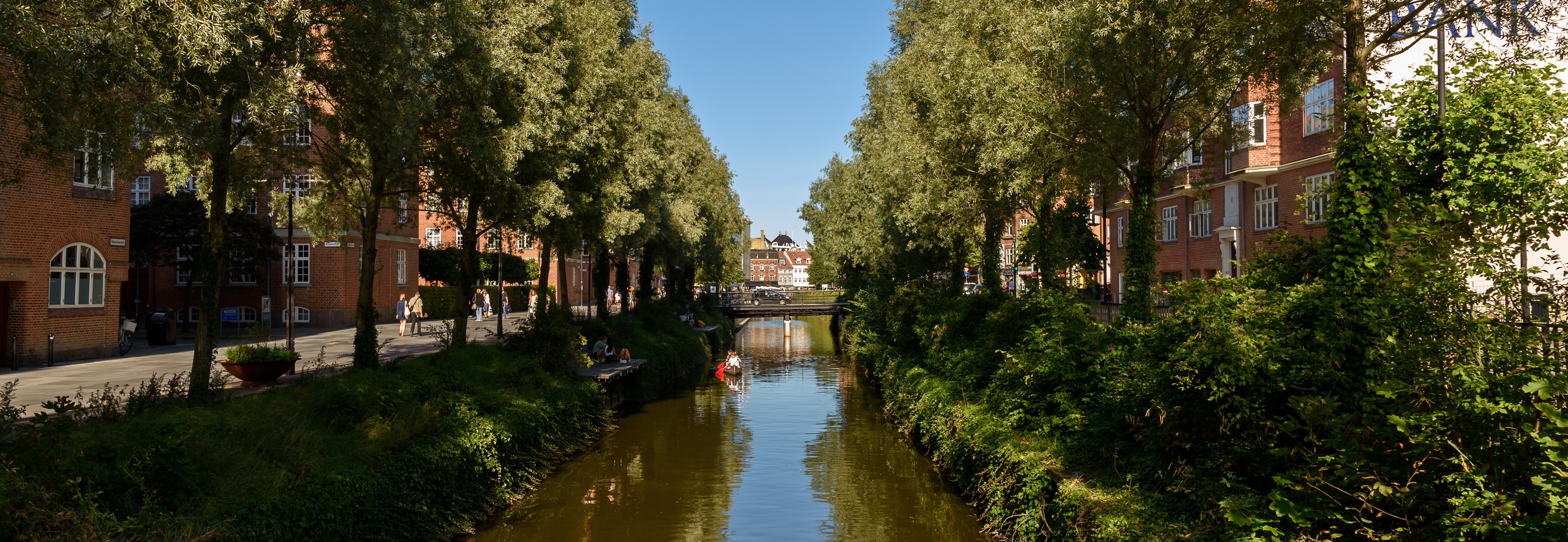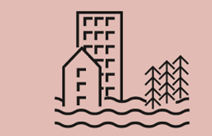
Streams and rivers get warmer in urban areas
Temperatures are generally higher in urban areas, and this also applies to the water that flows through urban areas, biologists from SDU find in a new study. "Warmer streams and rivers are never good", says head of research, Sara Egemose.
Urban areas tend to be warmer than the open country, and the difference can be several degrees. Reasons are that on one hand, there are more dark surfaces in urban areas, and on the other hand, pavements, roads, etc. retain more heat than, for example, grass and soil. This phenomenon is called the Urban Heat Island Effect.
It is therefore not surprising that water flowing through urban areas can also be warmer than in the open country.
The findings come from biologists Anja Svane Kolath and Sara Egemose, who have studied the temperature of urban area streams. Anja Svane Kolath is a Ph.D. student, and Sara Egemose is research leader at the Department of Biology, University of Southern Denmark. Their study is published here.
The studied stream is Vindinge Å, which runs through the Funen village of Årslev. The research team measured the temperature of the river water on a 5.2 km stretch before, in and after Årslev.
- The temperature rises on the water's path through the village due to the village’s heating effect, said Sara Egemose.
Where the temperature rises and how much it rises, depends on, for example, the air temperature and the number of hours of sunshine. But regardless of the conditions, the researchers saw that the water temperature was higher downstream from the village. After passing through the village, the water temperature in November-April was 0.1 – 0.4 degrees Celsius warmer. From May to October, the water was 0.1 – 0.8 degrees Celsius warmer.
May have unfortunate consequences
- It could potentially have some unfortunate consequences. Warmer water in streams is never good. On the one hand, warmer water may contain less oxygen, and on the other hand, a higher temperature increases the turnover of organic matter in the system, and lead to increased growth of algae. All in all, we are talking about effects that may have negative consequences for the wildlife in streams and rivers, said Sara Egemose.
Appr. 14% of Denmark is covered by urban areas, roads and other impermeable surfaces. At the same time, climate change also contributes to higher temperatures. According to Sara Egemose, this means that more and more streams are potentially impacted.
The question is, can we prevent this? And should we?
- In any case, we need to be aware that this is happening, and we need to learn more about what it means for wildlife. It's like the insects that never hit the car window anymore; It is not caused by one impact only – it is the sum of many impacts over the past decades, which means that we now have a biodiversity crisis. It is the same in the streams: many local and global impacts collectively produce a greater or smaller cocktail effect in the individual places. With this paper, we document that it happens and also that it happens in a relatively small town like Årslev and over a relatively short distance.
Meet the researcher
Sara Egemose is a biologist and expert in freshwater ecology. She is an Associate Professor at Dept of Biology.
Interested in studying climate adaptation?

Sustainable climate adaptation solutions require collaboration between many disciplines. Therefore, teaching in this programme emphasises working in interdisciplinary project groups.